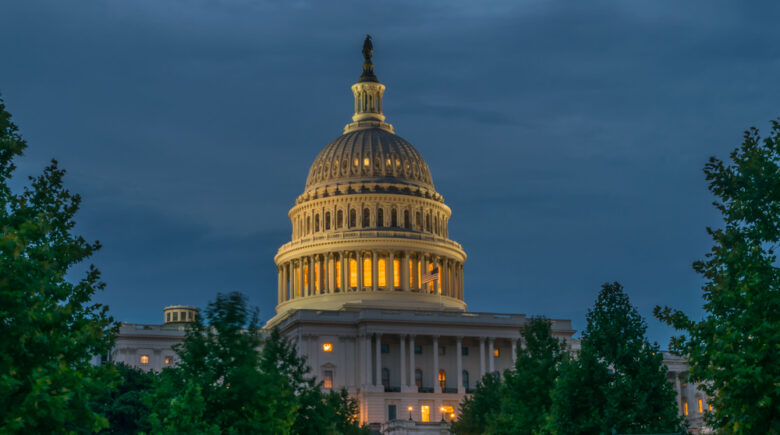Donald Trump and Elon Musk have wreaked untold havoc since the former was returned to the White House, with much being said by some demographics of Americans about fascist, and even “Christofascist” ideology corrupting the nation. Despite these recent upheavals to the status quo, the United States’ official definition of its form of rule is that of a “constitutional federal republic.” Before we can unpack all of these terms, we should start by addressing what sort of government the United States is supposed to be so that we can better observe how much Trump and Elon have begun to change that.
What About Democracy vs a Republic?
Democracy is when government power is derived from the general populace. This popular rule can be either direct or minimalist.
- A minimalist democracy has a great deal of overlap with the notion of the republic; this means that while the people hold power, they choose to elect representatives who ideally carry out the will of their constituents (the people responsible for putting representatives in power).
- A direct democracy gives the general public direct control over all aspects of governance.
Democracy is in direct opposition to authoritarianism where all decisions on how a country is run are made by either a single person, known as a dictator, or a select few, known as an oligarchy, without any sort of checks on power.
Constitutional?
All laws of the United States are based on a document known as the Constitution. This one document serves as the ultimate framework for all laws governing the nation and every state that comprises it. Furthermore, it sets the limits that exist on the powers of each state and branch of government.
How About Federal?
While the United States is broken up into a “confederation” of states, federal refers to laws that apply regardless of the state a person may live in. Federal laws supersede state laws except unless specifically stated otherwise. This distinction is where terms like “states’ rights” come from; one or more member states want to enact legislation that would normally be illegal at the federal level. For example, while the use of and possession of marijuana is illegal at the federal level, several states allow it in some capacity.
Checks and Balances
One concept that the United States government enjoys is the notion of three branches of government.
The President of the United States covers the executive branch. This means that the president ensures that legislation is enacted and is commander of all branches of the country’s military. Presidents can pen executive orders that are intended to ensure legislation is enacted to enforce law within the president’s perspective and the president has broad authority to decide what counts. Presidents are elected by the Electoral College, an organization consisting of representatives who can abide by or defy the results of the general election.
The Supreme Court of the United States (SCOTUS) covers the judicial branch. This means that it decides if legislation abides by the Constitution.
Congress, divided into the House of Representatives and the Senate, covers the legislative branch of government. This means that it decides whether or not legislation is approved and there must be a majority of agreement in both houses before a proposed bill can become law, which the president can then sign off on or veto. Congress can override a presidential veto if two-thirds of each house opposes the veto. While the president leads the military, Congress decides whether the country can go to war and how it spends money. While the Senate consists of two representatives for every state, membership within the House of Representatives depends upon the population findings of the latest census. Furthermore, there are five delegates without voting ability, representing Washington, D.C., Guam, the U.S. Virgin Islands, the Northern Mariana Islands, and American Samoa. As of the time of writing this, the House consists of 437 seats.
While the president can create new government departments with an executive order, Congress has the final say on whether or not those departments can be added to the government as part of a president’s cabinet; the Environmental Protection Agency was created by President Richard Nixon in July of 1970 and Congress made it a reality in December of that year. President Trump’s Department of Government Efficiency is not a true governmental department but merely a rebranding of the United States Digital Service that has engaged in several quasi-legal actions and is planned to become inert on July 4th, 2026.
Fascism
Fascism is a branch of ultra-nationalist authoritarianism, with a dictatorial leader, a great focus on strength and military endeavors, and often suppresses or denies select rights and liberties in pursuit of law and order. Many of Trump’s executive orders, passed like so many new rules by Dolores Umbridge from the “Harry Potter” book series, have an undercurrent of disdain for certain people or democracy, like revoking citizenship via birthright or cutting funding to government programs without Congressional approval, and the sheer number of times they have been challenged by federal judges, is quite telling of a fascist ideology.
Christofascism
This is a specific theistic strain of fascism that claims to act in accordance to the Christian Bible, yet seeks to place Christianity in all positions of government. Furthermore, these people would only honor the civil rights and liberties of Christians, so long as those people claim to be of the government’s specific denomination of Christianity, often Evangelism in the cast of American Christofascists.
Another thorn in this “aspirational” rule is “the wall of separation between Church and State” as mentioned in the Bill of Rights. While some evangelical Christians may claim that the separation between church and state exists so that federal matters cannot get in the way of religious actions, the Founding Fathers believed that religion was solely a matter for the individual and that no one faith should ever be forced upon Americans as a whole.
Donald Trump and Elon Musk have wreaked untold havoc since the former was returned to the White House, with much being said by some demographics of Americans about fascist, and even “Christofascist” ideology corrupting the nation. Despite these recent upheavals to the status quo, the United States’ official definition of its form of rule is that of a “constitutional federal republic.” Before we can unpack all of these terms, we should start by addressing what sort of government the United States is supposed to be so that we can better observe how much Trump and Elon have begun to change that.
What About Democracy vs a Republic?
Democracy is when government power is derived from the general populace. This popular rule can be either direct or minimalist.
- A minimalist democracy has a great deal of overlap with the notion of the republic; this means that while the people hold power, they choose to elect representatives who ideally carry out the will of their constituents (the people responsible for putting representatives in power).
- A direct democracy gives the general public direct control over all aspects of governance.
Democracy is in direct opposition to authoritarianism where all decisions on how a country is run are made by either a single person, known as a dictator, or a select few, known as an oligarchy, without any sort of checks on power.
Constitutional?
All laws of the United States are based on a document known as the Constitution. This one document serves as the ultimate framework for all laws governing the nation and every state that comprises it. Furthermore, it sets the limits that exist on the powers of each state and branch of government.
How About Federal?
While the United States is broken up into a “confederation” of states, federal refers to laws that apply regardless of the state a person may live in. Federal laws supersede state laws except unless specifically stated otherwise. This distinction is where terms like “states’ rights” come from; one or more member states want to enact legislation that would normally be illegal at the federal level. For example, while the use of and possession of marijuana is illegal at the federal level, several states allow it in some capacity.
Checks and Balances
One concept that the United States government enjoys is the notion of three branches of government.
The President of the United States covers the executive branch. This means that the president ensures that legislation is enacted and is commander of all branches of the country’s military. Presidents can pen executive orders that are intended to ensure legislation is enacted to enforce law within the president’s perspective and the president has broad authority to decide what counts. Presidents are elected by the Electoral College, an organization consisting of representatives who can abide by or defy the results of the general election.
The Supreme Court of the United States (SCOTUS) covers the judicial branch. This means that it decides if legislation abides by the Constitution.
Congress, divided into the House of Representatives and the Senate, covers the legislative branch of government. This means that it decides whether or not legislation is approved and there must be a majority of agreement in both houses before a proposed bill can become law, which the president can then sign off on or veto. Congress can override a presidential veto if two-thirds of each house opposes the veto. While the president leads the military, Congress decides whether the country can go to war and how it spends money. While the Senate consists of two representatives for every state, membership within the House of Representatives depends upon the population findings of the latest census. Furthermore, there are five delegates without voting ability, representing Washington, D.C., Guam, the U.S. Virgin Islands, the Northern Mariana Islands, and American Samoa. As of the time of writing this, the House consists of 437 seats.
While the president can create new government departments with an executive order, Congress has the final say on whether or not those departments can be added to the government as part of a president’s cabinet; the Environmental Protection Agency was created by President Richard Nixon in July of 1970 and Congress made it a reality in December of that year. President Trump’s Department of Government Efficiency is not a true governmental department but merely a rebranding of the United States Digital Service that has engaged in several quasi-legal actions and is planned to become inert on July 4th, 2026.
Fascism
Fascism is a branch of ultra-nationalist authoritarianism, with a dictatorial leader, a great focus on strength and military endeavors, and often suppresses or denies select rights and liberties in pursuit of law and order. Many of Trump’s executive orders, passed like so many new rules by Dolores Umbridge from the “Harry Potter” book series, have an undercurrent of disdain for certain people or democracy, like revoking citizenship via birthright or cutting funding to government programs without Congressional approval, and the sheer number of times they have been challenged by federal judges, is quite telling of a fascist ideology.
Christofascism
This is a specific theistic strain of fascism that claims to act in accordance to the Christian Bible, yet seeks to place Christianity in all positions of government. Furthermore, these people would only honor the civil rights and liberties of Christians, so long as those people claim to be of the government’s specific denomination of Christianity, often Evangelism in the cast of American Christofascists.
Another thorn in this “aspirational” rule is “the wall of separation between Church and State” as mentioned in the Bill of Rights. While some evangelical Christians may claim that the separation between church and state exists so that federal matters cannot get in the way of religious actions, the Founding Fathers believed that religion was solely a matter for the individual and that no one faith should ever be forced upon Americans as a whole.



